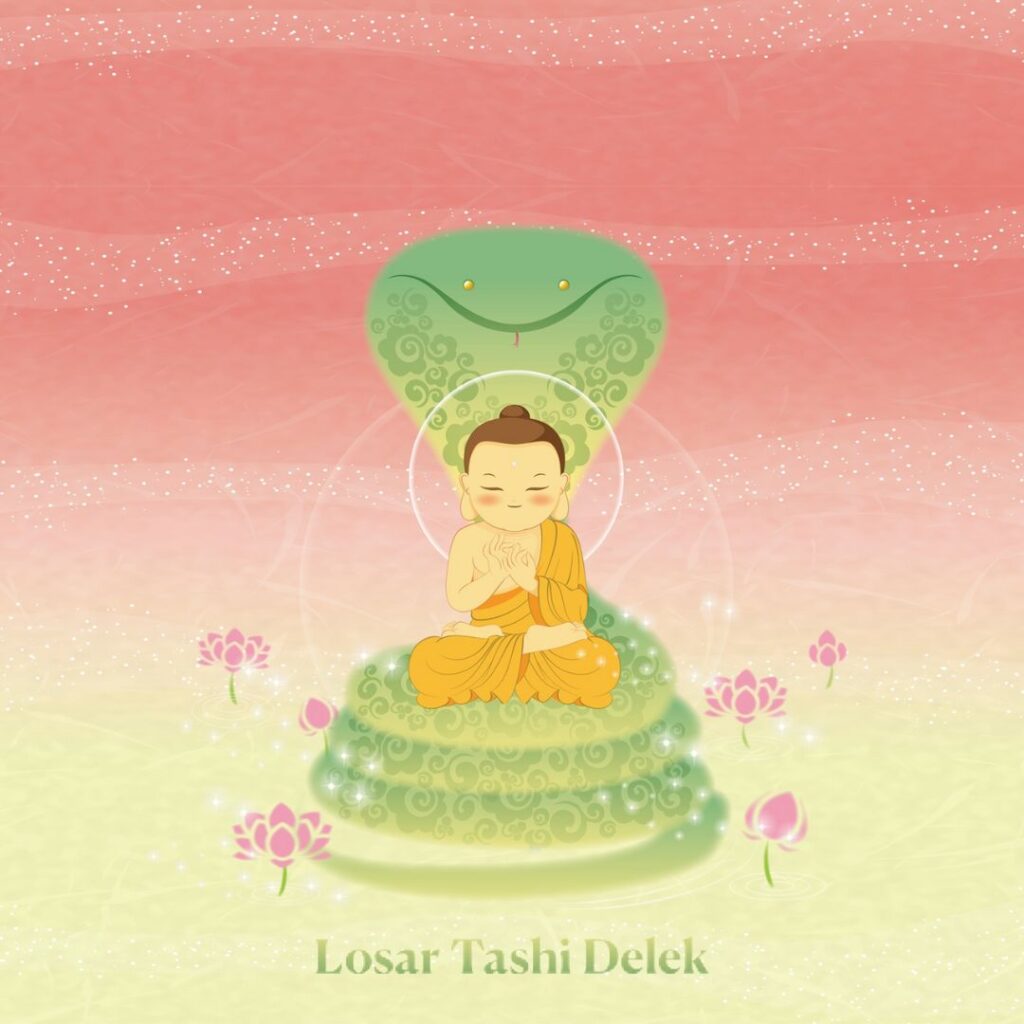Happy Losar!

Many cultures and spiritual traditions make use of their own calendar. There are various differences among them. For example, some are lunar calendars while others are solar calendars. In many cultures, calendars presuppose that the astrological movements carry a certain energy which impacts our personal life and our world as a whole. In such calendars, attention is paid to different combinations of the planets, solar system configurations, and associated energies symbolized in different ways.
Besides celebrating the common new year based on the Gregorian Calendar, Nalandabodhi also observes the Tibetan New Year (Losar) as a sangha (community) with chanting, meditation, sharing meals and so on in order to celebrate our interconnectedness, strengthen our aspirations, be free from obstacles and open our hearts, and to create kind communities in today’s world.
Every year Nalandabodhi and Nitartha International publish a Tibetan Calendar we can consult as guidance for our spiritual practice and daily life. You can order the latest calendar through our NalandaStore here.
Tibetan Calendars
There are two Tibetan calendar systems: the Phukluk and Tsurluk. There is no difference in the quality between these two calendar systems. They simply come from different lineages of astrological calculations. In some years, the two systems have the same date for the lunar new year; in other years the calendars differ in this regard. Both calendars have elements drawn from India and Chinese calendar systems, but are unique in incorporating Tibetan understandings of cycles of time and the relation between those cycles and spiritual life.
The Tsurluk was developed by the Third Karmapa in the early fourteenth century CE, and has been refined and upheld over the centuries pursuant to the lineage of teachings preserved since that time. The main monastery of the Karmapas is Tsurphu, in central Tibet; hence the name for the calendar of Tsur-luk. This is the calendar system followed by the Karma Kagyu lineage. Our founder and spiritual director Dzogchen Ponlop Rinpoche grew up under the guidance of the Sixteenth Karmapa at Rumtek Monastery, the seat of the Karma Kagyü lineage in India. We celebrate Losar and other major holidays according to the Tsurluk dates.
Spiritual practice & Vajrayana tradition
Both Tibetan calendar systems are based on a lunar year. The year is divided into a twelve year cycle with one animal and one element ruling each year. Whereas each month changes the animal sign, each element is in place for two years, before it changes to a new element. The animals in order are: Rabbit, Dragon, Snake, Horse, Snake, Monkey, Bird, Dog, Pig, Mouse, Ox and Tiger. The elements are Wood, Fire, Earth, Iron/Metal and Water. The combination of twelve animal signs with five element signs creates a sixty year cycle (12×5=60).
The Tibetan calendar and astrological systems are drawn in great part from the Buddhist tantras; thus they are strongly connected to the Vajrayana tradition and its teachings on various energies. Vajrayana teaches that reality has outer, inner, and secret elements. The outer elements are governed by astrological forces. The inner points to spiritual domains such as the motivation of compassion. The secret element is tied to tantric practices like the practice of Tibetan yogas.
In Tibetan Buddhist tradition there are many connections between spiritual practice and the calendar. Each year carries a certain energy we can connect with and refer to when making such decisions as when to do a retreat, build a monastery, put up prayer flags, and so on. Losar in particular is a period of change and new beginnings, a time to discard excess things and any negative energies remaining from the past year, and make a fresh start. As a support for our annual transition, Nalandabodhi conducts meditation and prayer sessions based on liturgies designed for the changing of the lunar year.
The Nalandabodhi / Nitartha Calendar
The Tibetan Calendar published by Nalandabodhi and Nitartha International each year marks the dates of the four important Buddhist holidays, anniversaries of important lineage figures and other significant dates considered auspicious for regular meditation practices. While the emphasis is on Tsurluk, the calendar shows Phukluk dates as well.
In addition to the basic lunar cycles, the Nalandabodhi/Nitartha calendar also provides a deep dive into additional cyclical combinations, in this way providing information on special astrological configurations which yield insight into additional energies of each day. In our daily life, whether we are traveling, working, or meeting friends and family, we can consult the calendar to look for auspicious days for particular activities.
Happy Losar!
With each year you can find on our website a brief note on the meaning of the specific year, so keep an eye out when Losar is approaching. Whatever calendar we may follow, celebrating the changing of the year offers a time to contemplate our aspiration for each new moment ahead, clear away obstacles, and open our hearts further for the well-being of all sentient beings and our planet, mother Earth. We wish you an auspicious new year full of joy, wisdom, and compassion!


